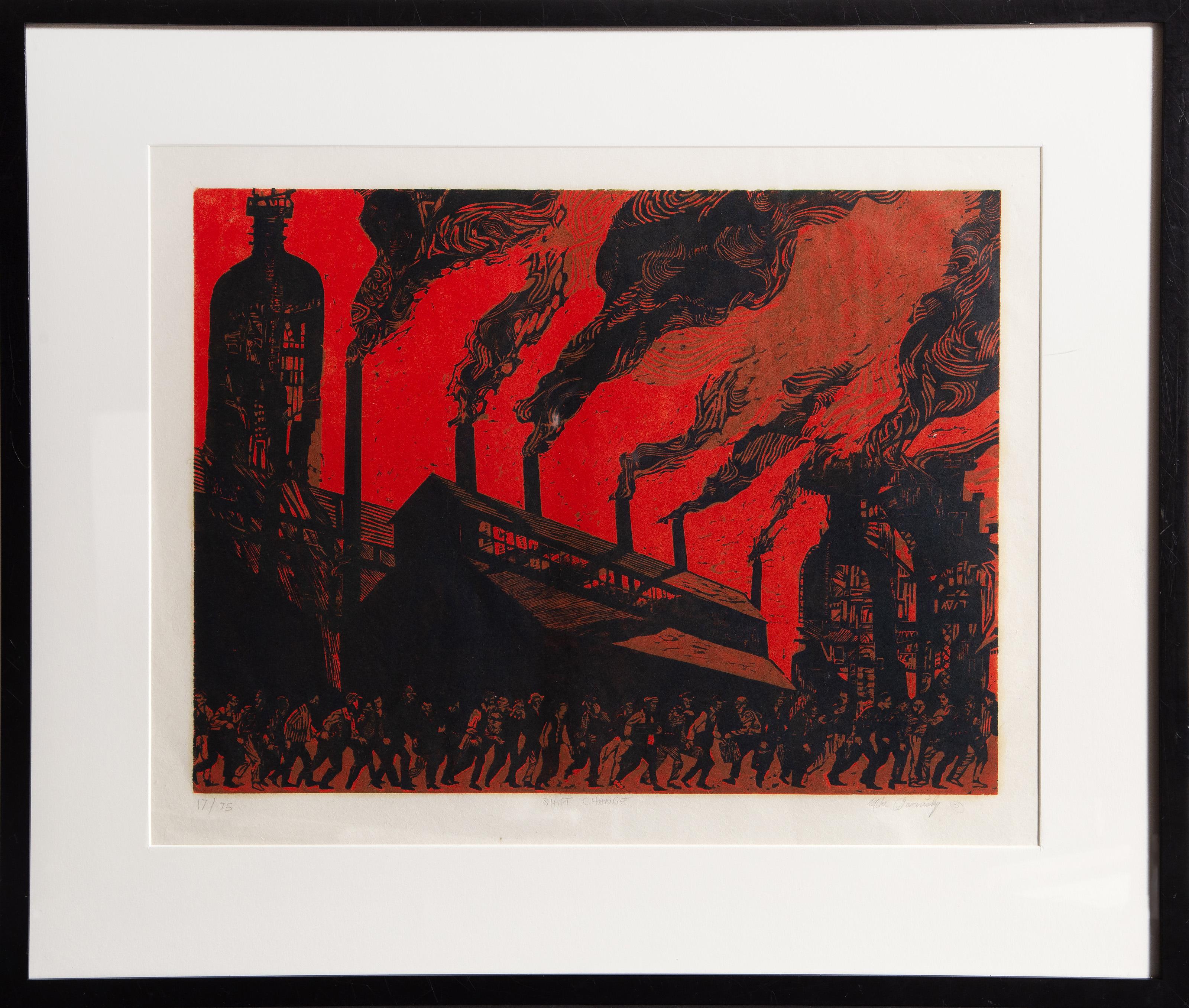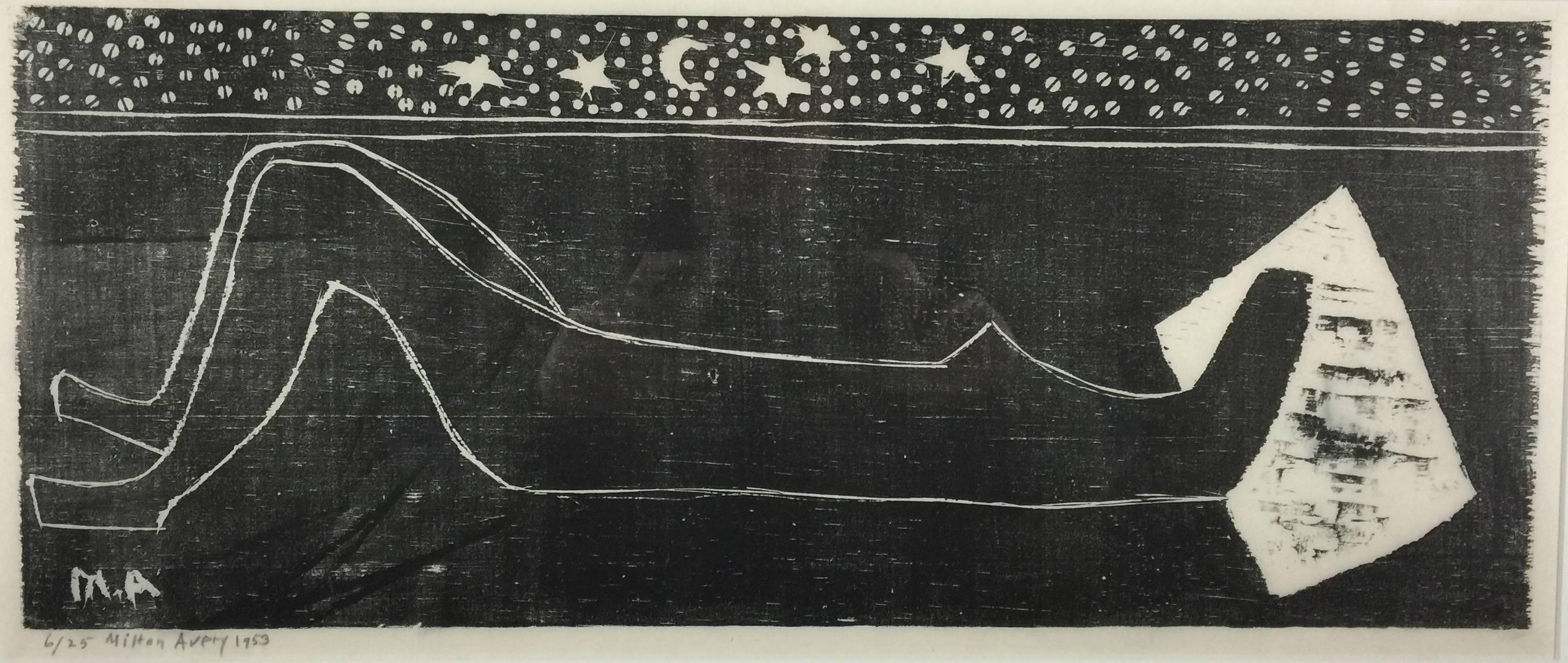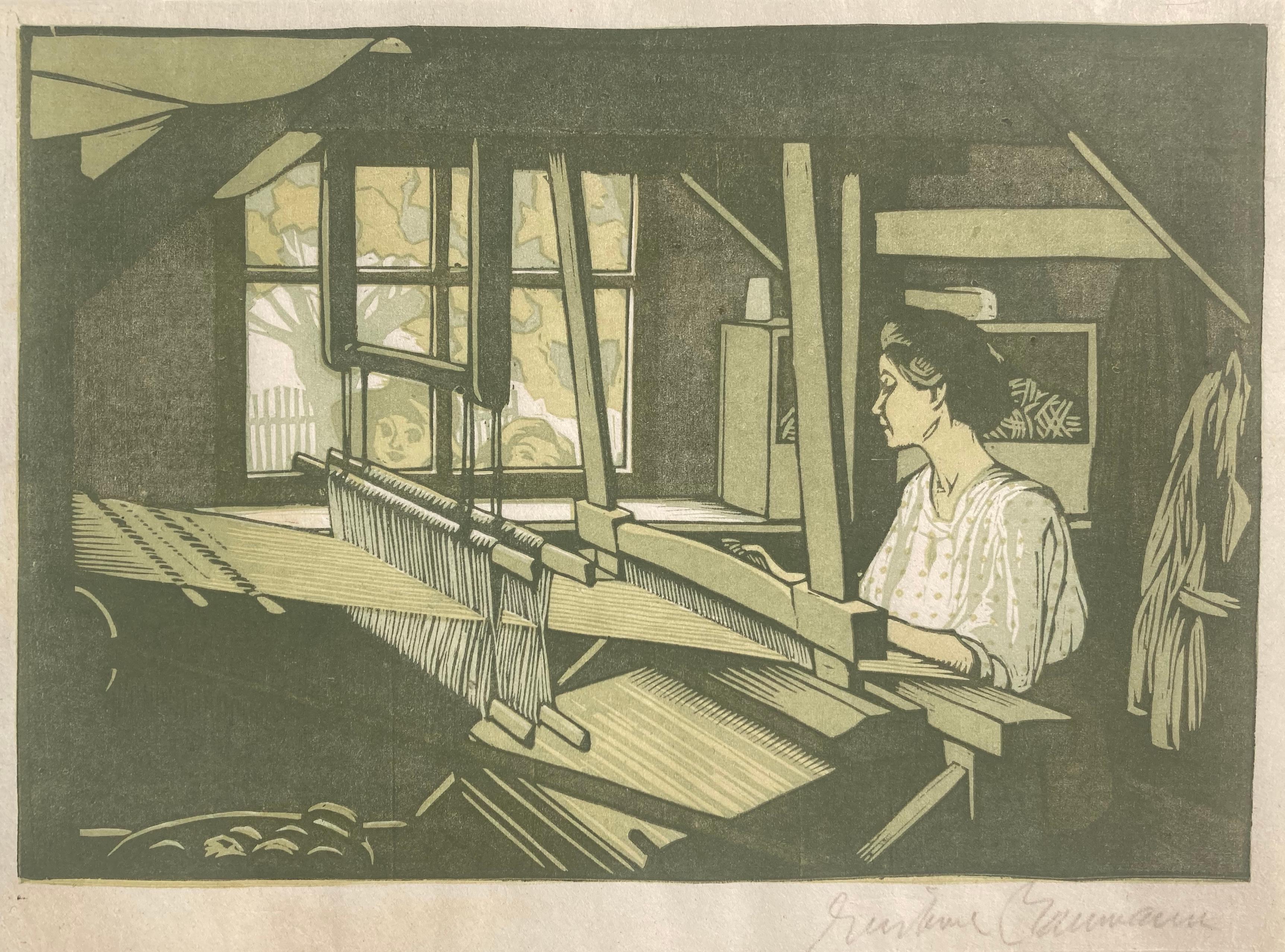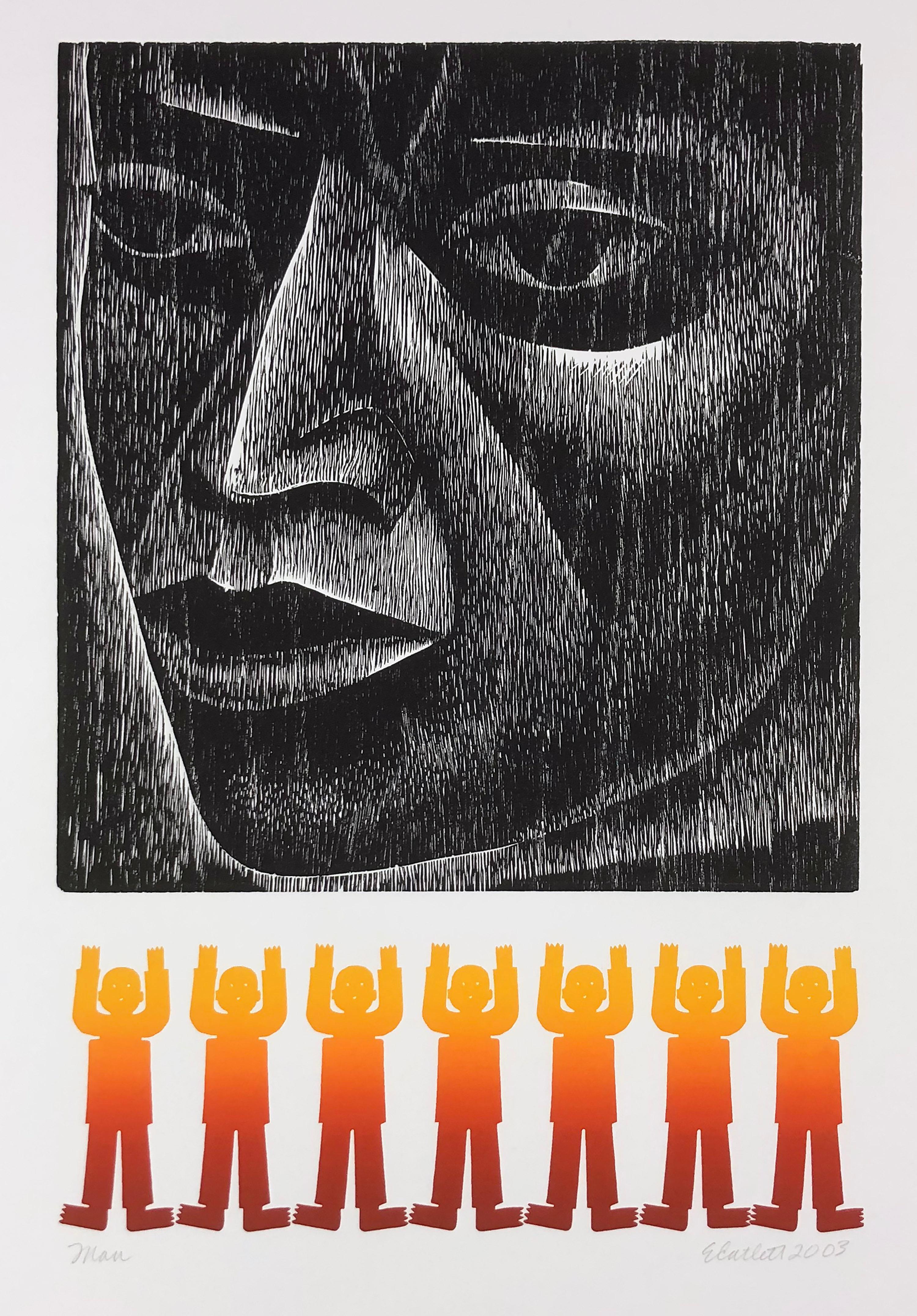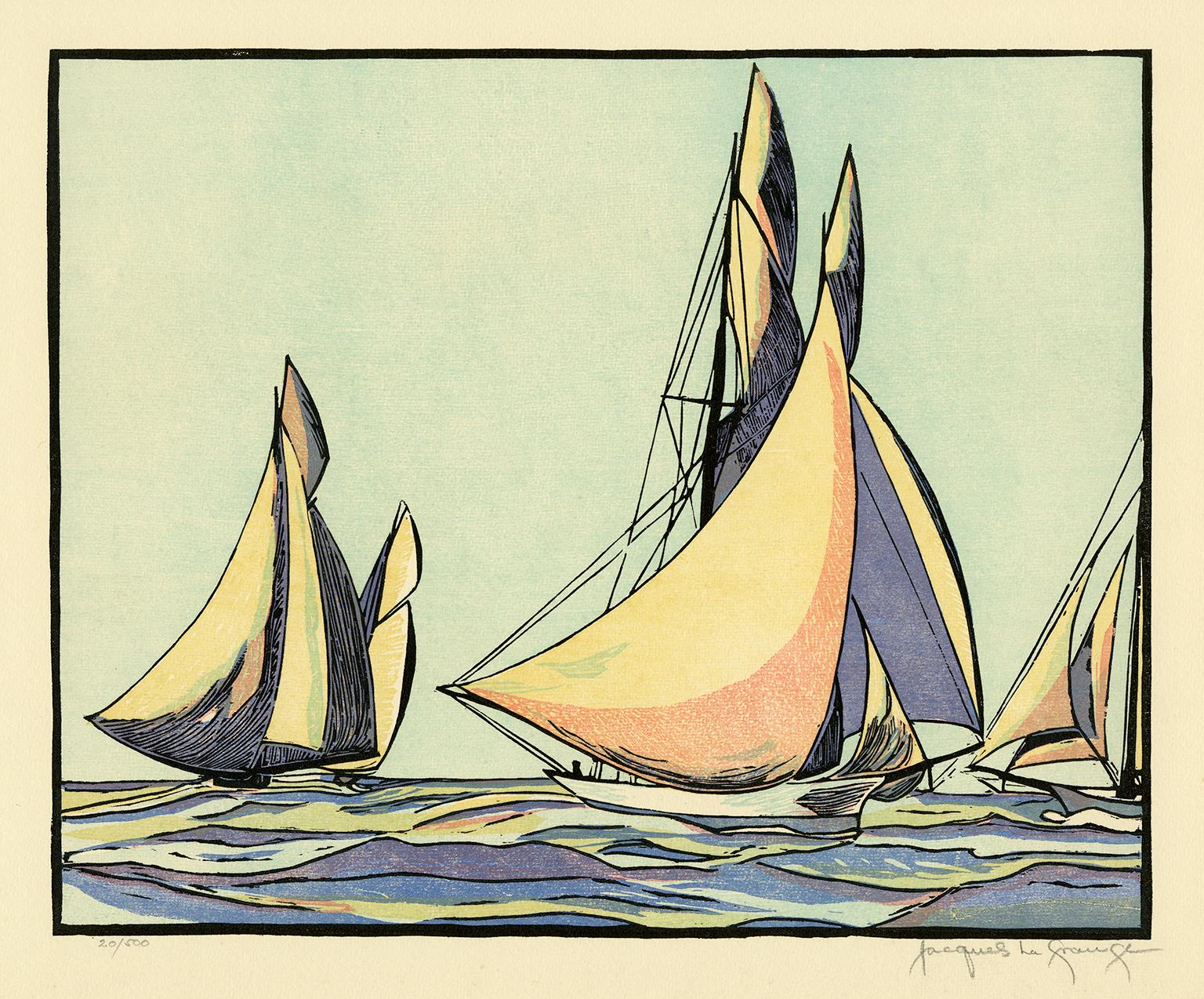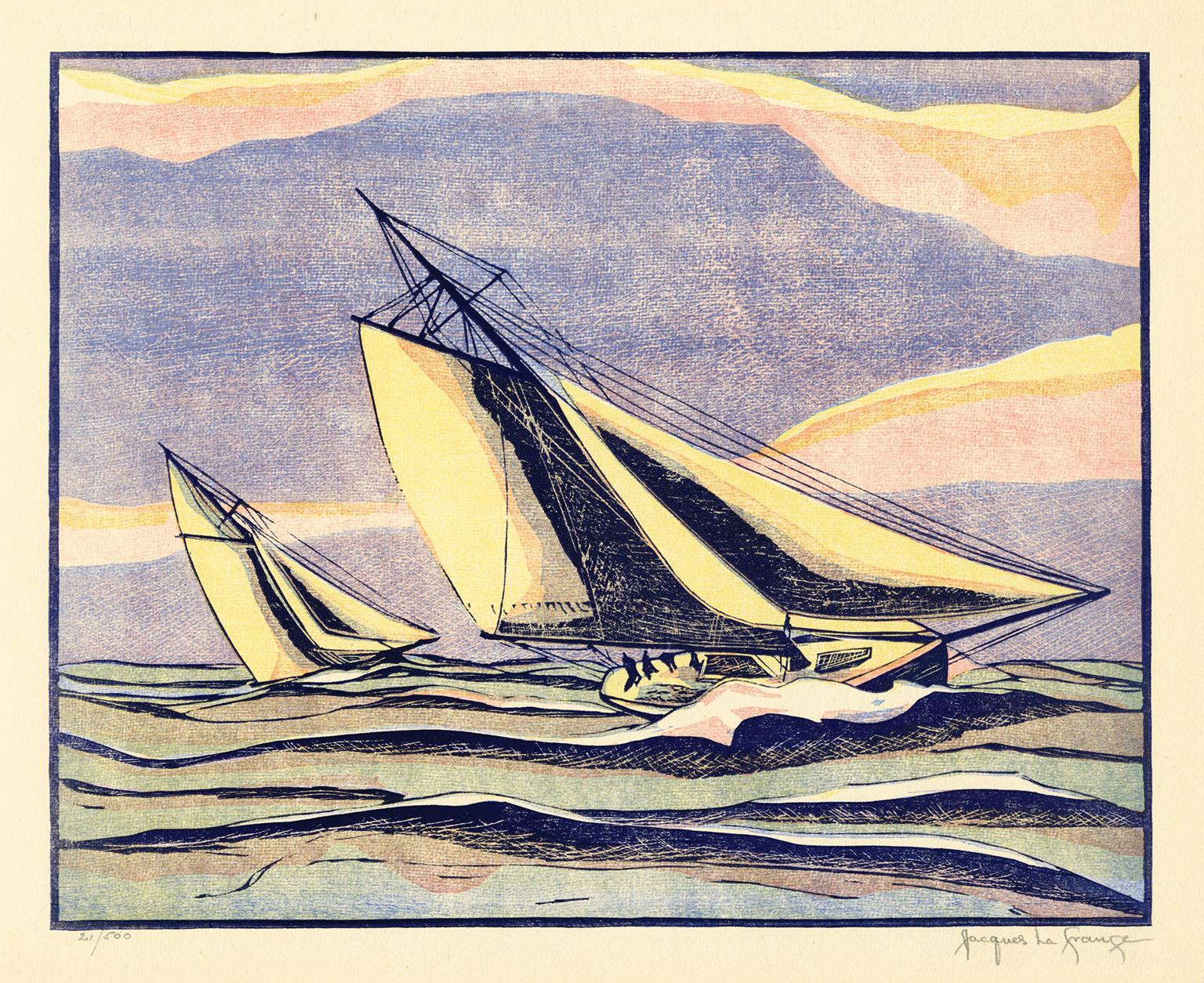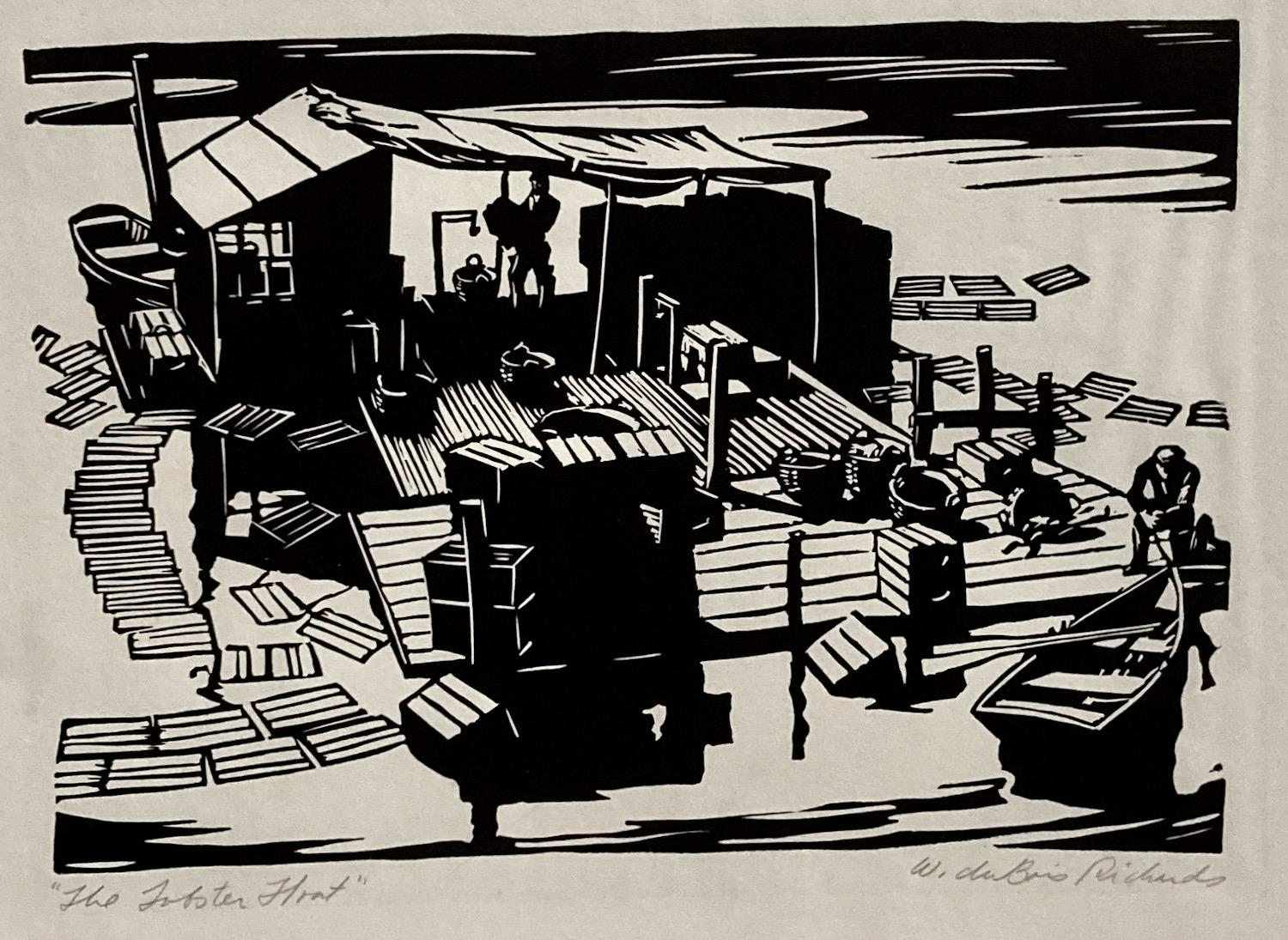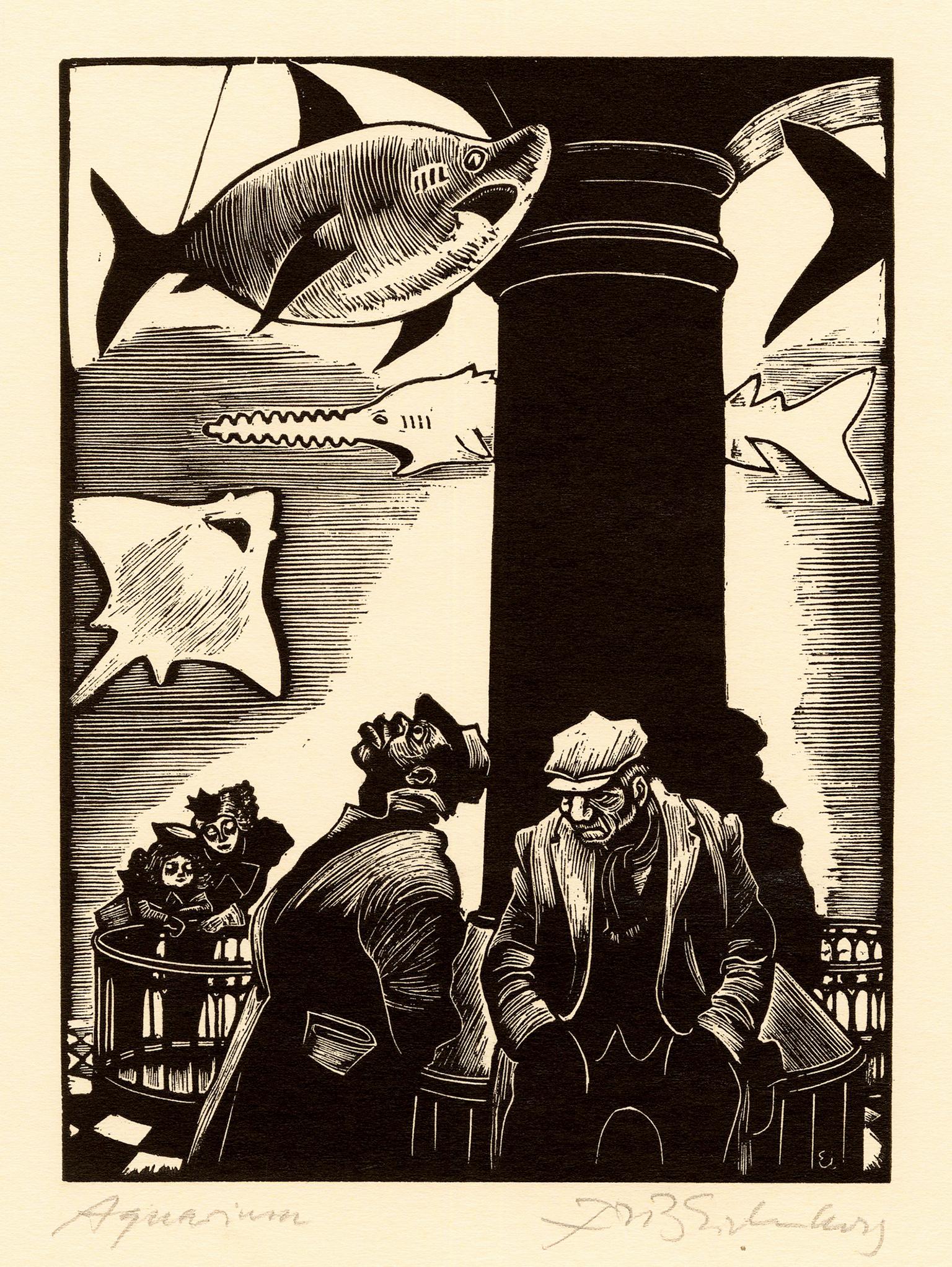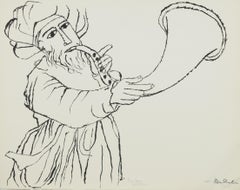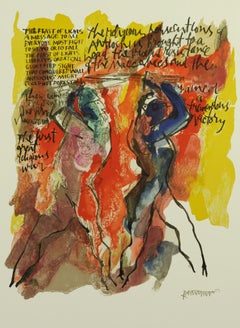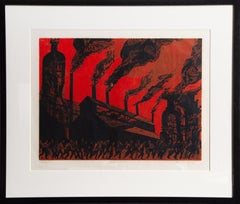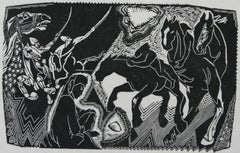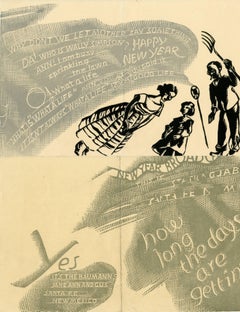
New Year’s Greeting Card Outer: Announcing a New Year’s Broadcast, Santa Fe, N M
View Similar Items
Want more images or videos?
Request additional images or videos from the seller
1 of 5
Gustave BaumannNew Year’s Greeting Card Outer: Announcing a New Year’s Broadcast, Santa Fe, N Mc. 1930s
c. 1930s
About the Item
- Creator:Gustave Baumann (1881-1971, American, German)
- Creation Year:c. 1930s
- Dimensions:Height: 9.63 in (24.47 cm)Width: 6.25 in (15.88 cm)
- Medium:
- Movement & Style:
- Period:
- Condition:Very Good, Centerfold as is usual for a Holiday card.
- Gallery Location:Fairlawn, OH
- Reference Number:Seller: FA100091stDibs: LU1401347703
About the Seller
5.0
Recognized Seller
These prestigious sellers are industry leaders and represent the highest echelon for item quality and design.
Platinum Seller
These expertly vetted sellers are 1stDibs' most experienced sellers and are rated highest by our customers.
Established in 1978
1stDibs seller since 2013
711 sales on 1stDibs
Typical response time: 1 hour
Associations
International Fine Print Dealers Association
More From This SellerView All
- On Christmas DayBy Gene KlossLocated in Fairlawn, OHOn Christmas Day Drypoint and aquatint, 1979 Signed lower right: Gene Kloss (see photo) Inscribed lower left: "Artist's Proof", and titled "On Christmas Day" An "artist's proof" imp...Category
1970s American Modern Figurative Prints
MaterialsDrypoint
- Man Sounding Horn (Psalm 150)By Ben ShahnLocated in Fairlawn, OHMan Sounding Horn (Psalm 150) Lithograph, 1969-1970 Estate signed: "Ben Shahn/by B.B. Shahn" in pencil lower center Stamped signature lower right (see photo) Signed by Mourlot Lith. in pencil lower right (see photo) Edition: 125 (67/125) see photo Psalm 150, "A Hallelujah Chorus" Published by Kennedy Graphics, Ltd., New York, NY Printed by Mourlot Graphics, Ltd., New York, NY Reference: Prescott 255 Kennedy Galleries, The Kennedy Graphics, 380, reproduced Condition: Very good Image/sheet size: 20 1/8 x 25 3/8 inches A posthumous print "This was the final project completed by Ben Shahn (1898-1969), leading American realist painter and muralist widely recognized for his socially conscious works. Born in Lithuania to Jewish parents, Shahn emigrated to the United States in 1906 and became a popular and versatile artist who worked in a variety of media and on a range of projects. His credits are as varied as assistant to muralist Diego Rivera, photographer for the Resettlement Administration (alongside the likes of Dorothea Lange and his friend, Walker Evans), maker of posters for the Office of War Information during WWII, and commercial artist for CBS. He is best known, however, for artwork depicting left-leaning political ideals and highlighting social concerns, such as his series of gouache paintings known as "The Passion of Sacco and Vanzetti...Category
1960s American Modern Figurative Prints
MaterialsLithograph
- Feast of Lights: HanukkahBy Abraham RattnerLocated in Fairlawn, OHFeast of Lights (Poster) Signed in the stone 17 color lithograph Published by Kennedy Galleries Edition: Unknown edition, signed in the stone There was also a pencil signed edition o...Category
1970s American Modern Figurative Prints
MaterialsLithograph
- Profile Bust of a Girl - Woman's Head in Profile (Havard)By Elie NadelmanLocated in Fairlawn, OHProfile Bust of a Girl - Woman's Head in Profile (Havard) Drypoint, 1920 Unsigned (as issued) From: The Drypoints of Elie Nadelman, 21 unpublished prints by the sculptor, proof from ...Category
1920s American Modern Figurative Prints
MaterialsDrypoint
- Mayan TrioBy Francisco DosamantesLocated in Fairlawn, OHMayan Trio Lithograph, 1950 Signed in pencil lower right (see photo) Edition 250 for Associated American Artists Publsihed 1950 Reference: AAA Cat.: 1950‑05; 1958‑01 AAA Index 1087 Condition: Excellent Image size: 13 x 9 1/2 inches Francisco Dosamantes (b. October 4, 1911 - d. July 18.1986) was a Mexican artist and educator who is best known for is educational illustrations and graphic work against fascism. He was a founding member of the Taller de Gráfica Popular and the Salón de la Plástica Mexicana. Life Francisco Dosamantes was born in Mexico City on October 4, 1911. His father was Daniel Dosamantes who was a builder, interior decorator and painter. He was not registered into the civil registry until he was about twenty years old on March 6, 1939. His mother’s name is not listed on the certificate. As a child, he demonstrated a strong interest in drawing and color, influenced by his father and his uncle Juan. The Mexican Revolution occurred while he was a young child and he stated that he remembered events such as soldiers on horses charging as well as the execution of rural farm workers. He attended primary and high school in Mexico City but stated that his education was irregular and deficient. He then entered the Escuela Nacional de Artes Plásticas, where he studied for five years. Initially, however, he was disappointed with the inexperience of the young professors and he left for a short time to study on his own. During this time, some of the dissatisfied professors organized the 30 30 group against the academic system of the school and which whom he sympathized. The effort gained the attention of established artists such as Diego Rivera who intervened. He died on Mexico City on July 18, 1986 Career After he graduated, he worked with the cultural missions of the Secretaría de Educación Pública in Oaxaca, Michoacán, Guerrero, Colima, Coahuila and Chihuahua (state) from 1932 to 1937 then again from 1941 to 1945. He stated that this experience was vital to his conscience as he worked with rural farm workers and others he stated were worthy of dignity and respect, but victims of deceit and exploitation. When he returned to Mexico City, he gave classes in high schools from 1937 to 1941. In 1945 he founded and directed the Taller Escuela de Dibujo y Pintura “Joaquín Claussell” in Campeche, Campeche. Dosamantes was a politically and culturally active artist with most of his work and affiliations related to such. He was a member of the Liga de Escritores y Artistas Revolucionarios from 1934 to 1938. He was a founding member of the Taller de Gráfica Popular, serving as administrator in 1940 and remaining a member until his death except for one short hiatus. He created posters for conferences about fascism and Nazism such as Alemania bajo bayonetas (Germany under bayonets) in 1938. In 1940 he became the secretary general of the Sindicato de Maestros de Artes Plásticas. He was also a member of the Sociedad para el Impulso de las Artes Plásticas en 1948, a founding member of the Salón de la Plástica Mexicana in 1949 and a member of the Frente Nacional de Artes Plásticas from 1952. He painted a number of murals in rural areas of Mexico generally when he was there on cultural missions. His main mural is at the former home of José María Morelos in Carácuaro, Michoacán, but there are a number at various rural schools. These were all painted between 1941 and 1946. As a book illustrator he mostly worked for the Secretaría de Educación Pública working on books for literacy campaigns. He exhibited his works, which included engravings, oils, tempuras and lithographs in Mexico and abroad. His first individual exhibition was in 1930 at the Galeria de Arte Moderno in Mexico City. His major exhibitions include the Excelsior Gallery in Mexico City in 1932, various exhibitions in New York, Washington, Philadelphia and Los Angeles in 1937; the Nelson Gallery of Art in Kansas City, Missouri in late 1947, and the Gallery of Mexican Art in...Category
1950s American Modern Figurative Prints
MaterialsLithograph
- Grand Tier and the MetBy Reginald MarshLocated in Fairlawn, OHGrand Tier at the Met Etching, 1939 From: Reginald Marsh, Thirty Etchings and Engravings Published by the Whitney Museum of American Art, 1969 Unsigned (as usu...Category
1930s American Modern Figurative Prints
MaterialsEtching
You May Also Like
- Shift Change, Social Realist Woodblock Print by Mike GoscinskyLocated in Long Island City, NYShift Change Mike Goscinsky, American (1933–2021) Woodblock on thin wove paper, signed, titled and numbered in pencil Edition of 15/75 Image Size: 14 x 19 inches Size: 22 x 26.5 in. ...Category
1990s American Modern Landscape Prints
MaterialsWoodcut
- HoovesBy Helen West HellerLocated in Storrs, CTHooves. 1927. Woodcut. 7 1/2 x 12 (sheet 11 7/8 x 15 1/8). Printed on heavy Japanese mulberry paper. Signed, dated, and titled in pencil. An example of this work is in the collectio...Category
1920s American Modern Animal Prints
MaterialsWoodcut
$250 Sale Price73% Off - NIGHT NUDEBy Milton AveryLocated in Portland, MEAvery, Milton. NIGHT NUDE. Woodcut, 1953. Edition of 25 in black and white (there were a further 25 printed in black and blue). Signed, dated and numbered "6/25" in pencil, and also ...Category
1950s American Modern Figurative Prints
MaterialsWoodcut
$12,500 - THE RUG WEAVERBy Gustave BaumannLocated in Santa Monica, CAGUSTAVE BAUMANN (1881 – 1971) THE RUG WEAVER, 1910 (Chamberlain 26) Color woodcut signed in pencil. Unnumbed from an edition 100 as published in the Hills o’ Brown...Category
1910s American Modern Figurative Prints
MaterialsWoodcut
- ManBy Elizabeth CatlettLocated in Missouri, MOElizabeth Catlett “Man” 1975 (The Print Club of Cleveland Publication Number 83, 2005) Woodcut and Color Linocut Printed in 2003 at JK Fine Art Editions Co., Union City, New Jersey Signed and Dated By The Artist Lower Right Titled Lower Left Ed. of 250 Image Size: approx 18 x 12 inches Elizabeth Catlett (1915-2012) is regarded as one of the most important women artists and African American artists of our time. She believed art could affect social change and that she should be an agent for that change: “I have always wanted my art to service black people—to reflect us, to relate to us, to stimulate us, to make us aware of our potential.” As an artist and an activist, Catlett highlighted the dignity and courage of motherhood, poverty, and the working class, returning again and again to the subject she understood best—African American women. The work below, entitled, “Man”, is "carved from a block of wood, chiseled like a relief. Catlett, a sculptor as well as a printmaker, carves figures out of wood, and so is extremely familiar with this material. For ‘Man’ she exploits the grain of the wood, allowing to to describe the texture of the skin and form vertical striations, almost scarring the image. Below this intense, three-dimensional visage parades seven boys, printed repetitively from a single linoleum block in a “rainbow roll” that changes from gold to brown. This row of brightly colored figures with bare feet, flat like a string of paper dolls, raise their arms toward the powerful depiction of the troubled man above.” Biography: Elizabeth Catlett (1915-2012) Known for abstract sculpture in bronze and marble as well as prints and paintings, particularly depicting the female figure, Elizabeth Catlett is unique for distilling African American, Native American, and Mexican art in her work. She is "considered by many to be the greatest American black sculptor". . .(Rubinstein 320) Catlett was born in Washington D.C. and later became a Mexican citizen, residing in Cuernavaca Morelos, Mexico. She spent the last 35 years of her life in Mexico. Her father, a math teacher at Tuskegee Institute in Alabama, died before she was born, but the family, including her working mother, lived in the relatively commodious home of his family in DC. Catlett received a Bachelor of Arts degree from Howard University, where there was much discussion about whether or not black artists should depict their own heritage or embrace European modernism. She earned a Master of Fine Arts degree in 1940 from the University of Iowa, where she had gone to study with Grant Wood, Regionalist* painter. His teaching dictum was "paint what you know best," and this advice set her on the path of dealing with her own background. She credits Wood with excellent teaching and deep concern for his students, but she had a problem during that time of taking classes from him because black students were not allowed housing in the University's dormitories. Following graduation in 1940, she became Chair of the Art Department at Dillard University in New Orleans. There she successfully lobbied for life classes with nude models, and gained museum admission to black students at a local museum that to that point, had banned their entrance. That same year, her painting Mother and Child, depicting African-American figures won her much recognition. From 1944 to 1946, she taught at the George Washington Carver School, an alternative community school in Harlem that provided instruction for working men and women of the city. From her experiences with these people, she did a series of paintings, prints, and sculptures with the theme "I Am a Negro Woman." In 1946, she received a Rosenwald Fellowship*, and she and her artist husband, Charles White, traveled to Mexico where she became interested in the Mexican working classes. In 1947, she settled permanently in Mexico where she, divorced from White, married artist Francisco Mora...Category
Late 19th Century American Modern Figurative Prints
MaterialsLinocut, Woodcut
Price Upon Request - 'The Start of the Race' — America's Cup, 1899By Jacques La GrangeLocated in Myrtle Beach, SCJacques La Grange, 'The Start of the Race, 1899', color woodcut, edition 500, 1934. Signed and numbered '21/500' in pencil. A fine impression, with fresh colors, on cream wove paper,...Category
1930s American Modern Figurative Prints
MaterialsWoodcut
$560 Sale Price20% Off
